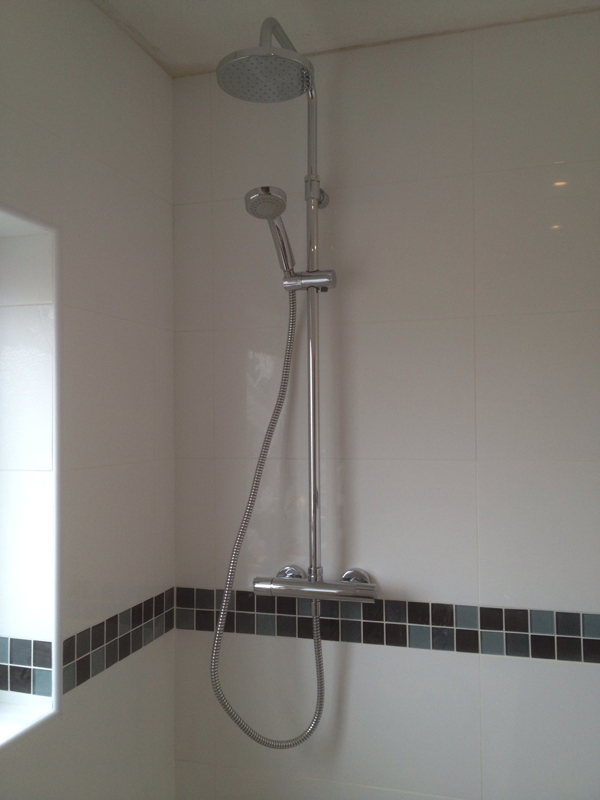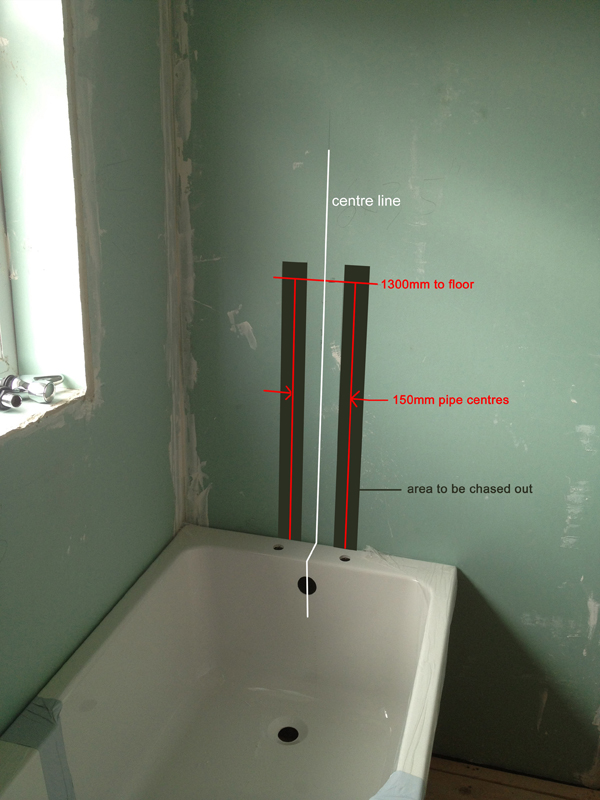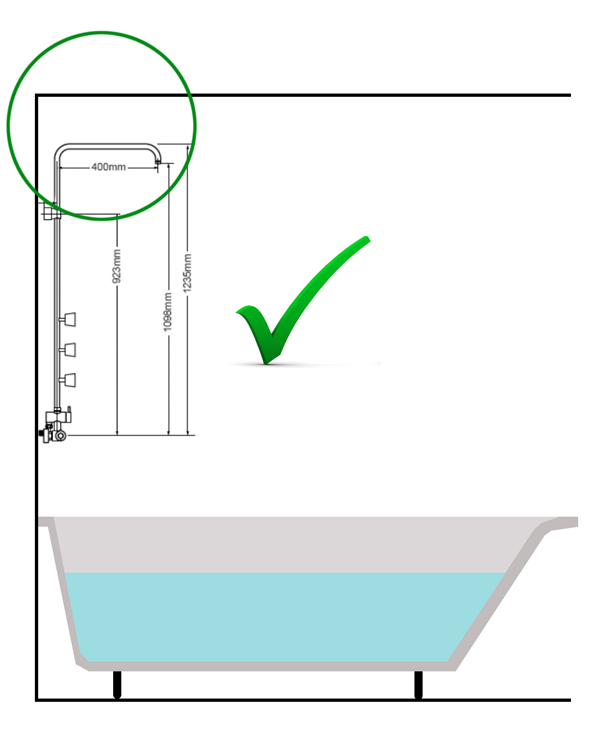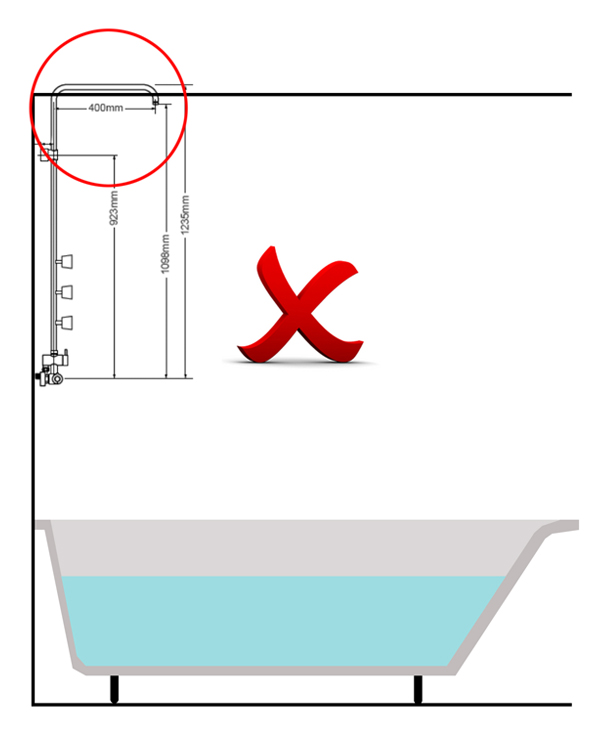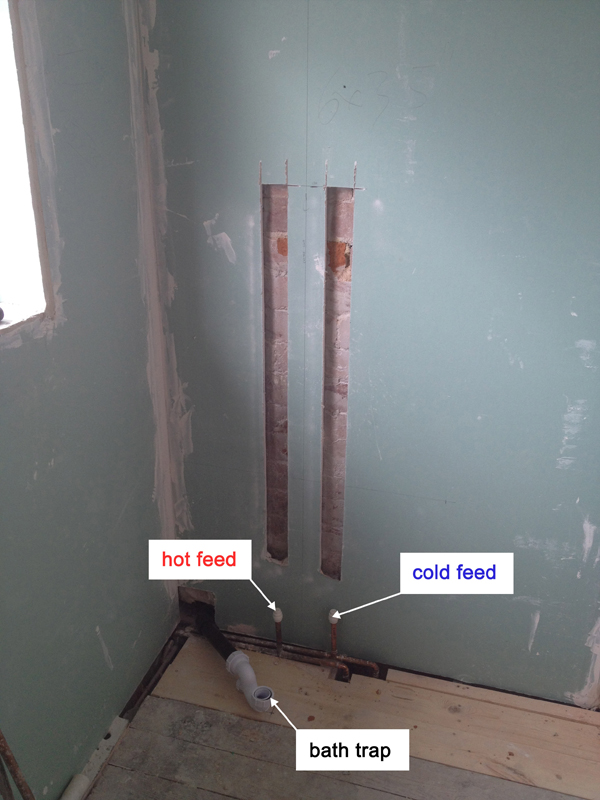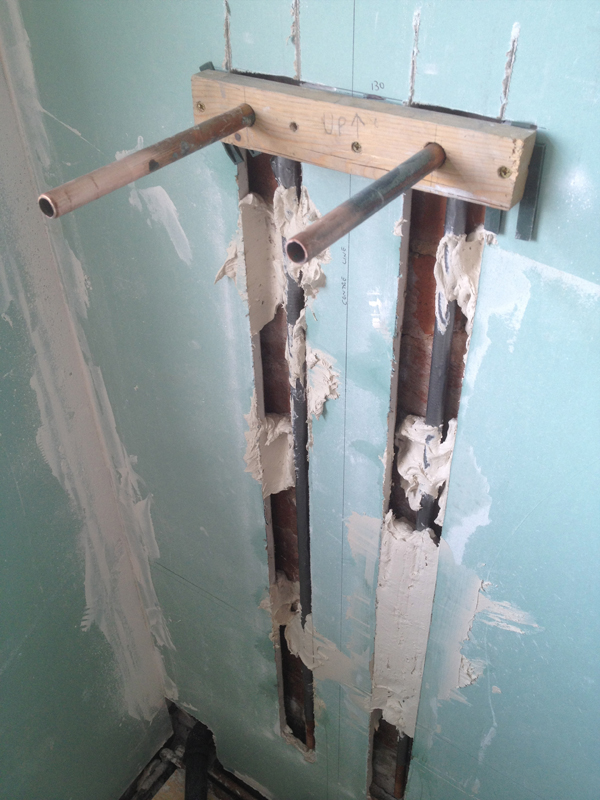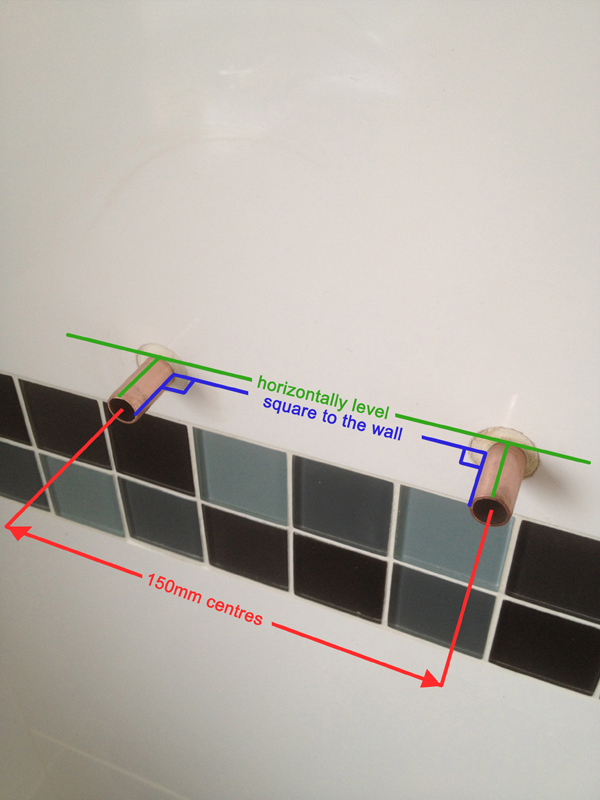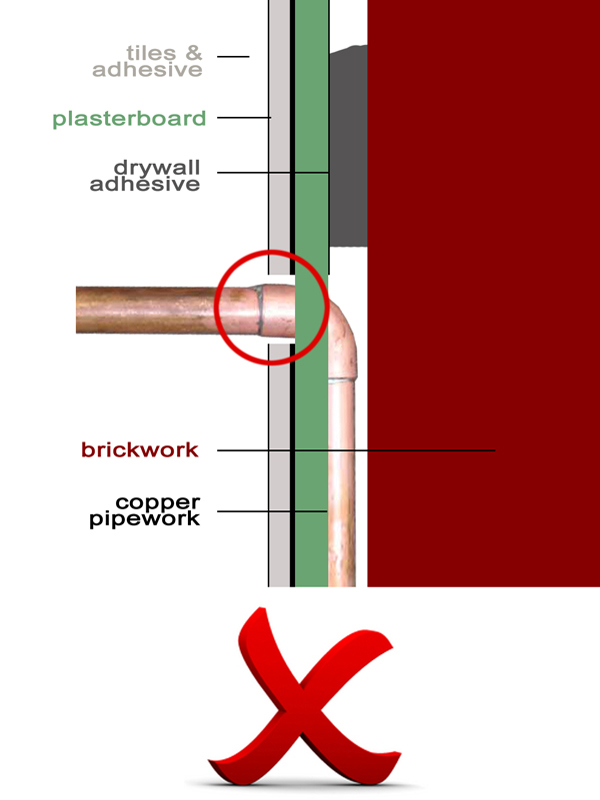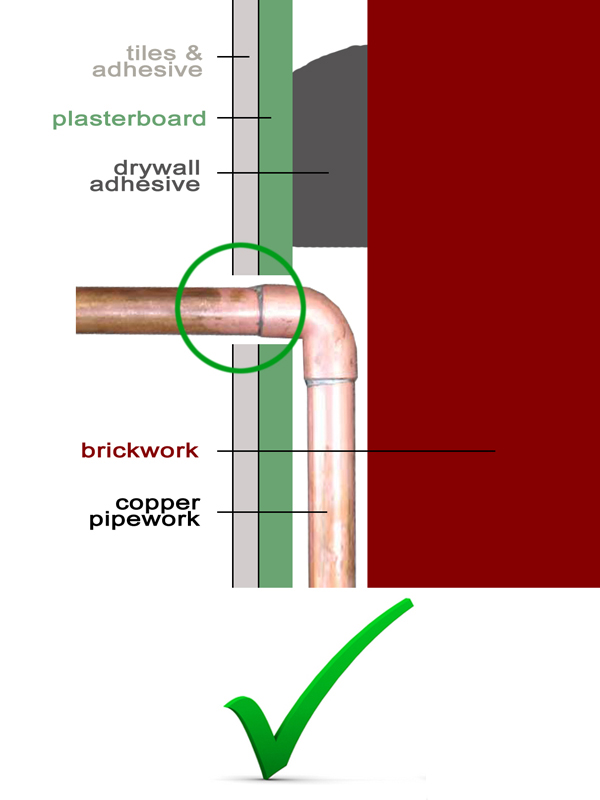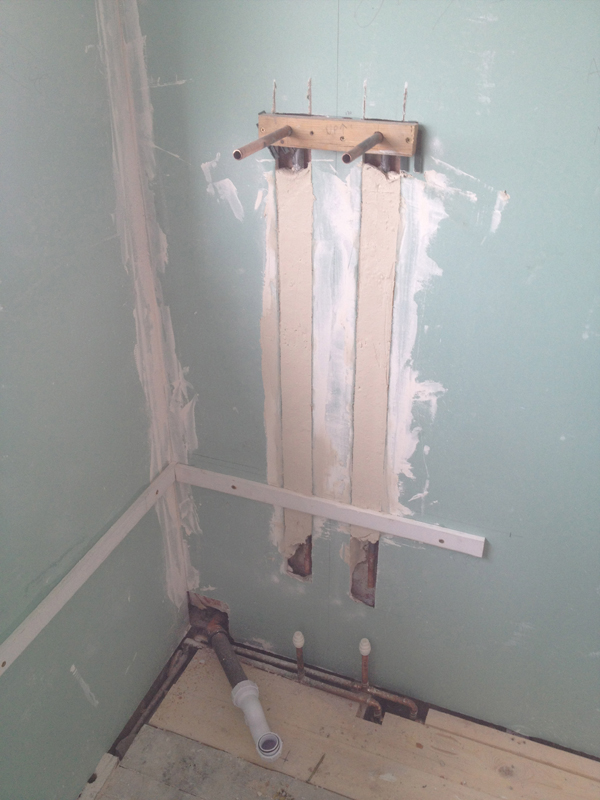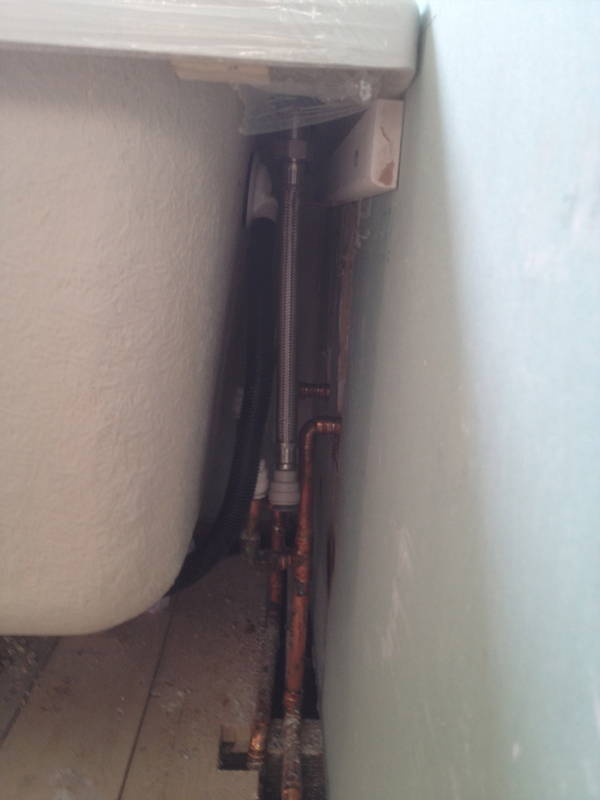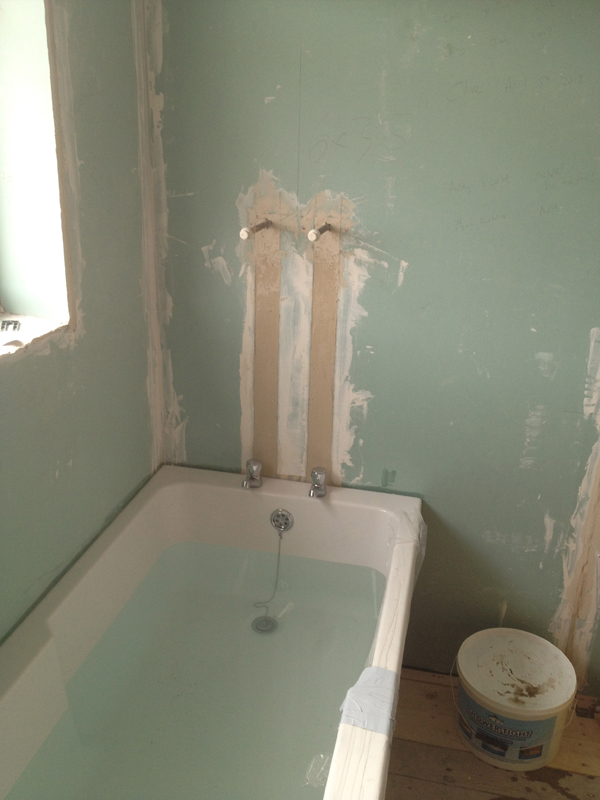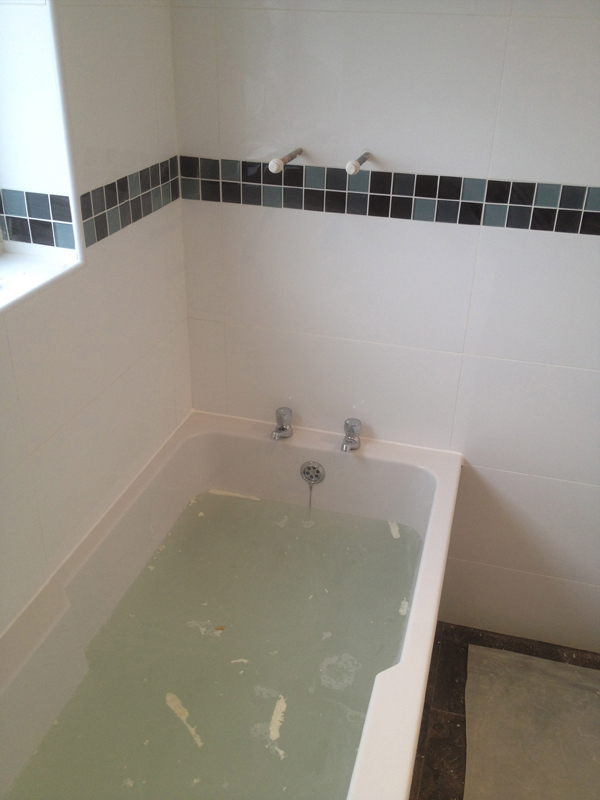This article explains how to 1st fix pipework for a bar mixer shower valve installation.
Introduction
When installing a bar mixer shower valve such as the one shown, it is first necessary to run hot and cold pipework to the valve.
Please see Choosing a shower for your bathroom for more information on shower types and their suitability for your bathroom.
This is done by recessing the pipes within the wall prior to tiling.
In this case study I will be recessing the pipework into a bathroom wall that has already been dot n dabbed with moisture resistant plasterboard.
Doing the plaster-boarding before the 1st fix pipework makes it easier to get perfectly flat & level walls as you don’t have the fiddly task of trying to fit the boards around / over the pipework (among other things.)
Walls also need to be square in the corners to allow a good seal (along the edge of the bath in this instance.)
Please see Preparing walls for tiling – reboarding for more information relating to this subject.
Method
The bath is temporarily placed in position, and the centre line (that runs through the overflow / waste and the centre of the bath taps) is marked.
This will help us line the shower valve up with the taps for a more aesthetically pleasing finish.
The horizontal level of the bar mixer shower valve is then marked, which is usually around 130cm from the floor. If you are intending to fit a bar mixer shower with a fixed riser and shower head, you will need to ensure that this height enables you to fit the shower in without it hitting the ceiling.
Next the pipe centres are marked with vertical lines at 150mm centres i.e. 75mm away from the centre line in both directions. This is where the pipework will run from the valve, down the wall and connect to the pipework under the bath.
Most bar mixer shower valves accept pipework at 150mm centres as this is considered standard – if your particular model has a different pipe centre value, then you need to reflect this at the marking out stage.
An area to be chased out is then marked (into which the pipes can be recessed beneith the surface of the plasterboard.)
The approximate height of the bath rim is also marked at this stage.
The areas to be chased out are then chased out using an exact saw, ensuring that they extend below the level of the bath rim, which is marked in pencil on the plasterboard.
Here we can see the pipework under the bath that will be extended up to feed the shower valve.
The hot feed will be run up the left hand channel, and the cold feed will be run up the right hand channel.
This is because the hot feed will enter the valve on the left (as we look at it) and the cold feed on the right.
This is an industry standard.
Because of this, the pipework under the bath is in line with this configuration.
You can see that the bath waste pipe & trap has also been fitted at this time. When the bath was in position, a cross was marked on the floor through the waste hole in the bottom of the bath to mark the necessary location of the bath trap.
Two pieces of 15mm copper pipework are then soldered together with a 90º elbow for each feed, which are then placed into the channels as shown.
The horizontal pieces of copper (at the top) will eventually be cut down to go into the back of the bar mixer valve.
The pipes are held level and square to the wall at 150mm centres (centred on the initial centre line) by a home-made jig which is screwed to the wall temporarily. This is important as attaching the shower valve relies on this stage of the work being done accurately:
It is important the the pipes are recessed far enough into the wall so that the 90º elbow fitting does not protrude out beyond the finished tiled surface.
This will ensure that it does not interfere with the fitting of the bar mixer shower valve.
The pipes are then secured in place by using either drywall adhesive, rapidset tile adhesive or a sand-cement mix.
If using a mix containing cement, please ensure the pipes are wrapped in duct tape to prevent the cement from attacking the copper which could lead to pinholes and leaks developing over time.
The mix is pushed in and around the pipes and is used to support the cut edges of the plasterboard.
This is then levelled off flush with the surface of the plasterboard, ensuring access to the bottom of the pipes is left open so that they can be connected up later.
Batons are screwed and glued to both walls bordering the bath, and these will help to take the weight of the bath when it is full of water and/or occupants. This will prevent it from dropping, which can result in broken silicon seals and water ingress problems.
The bath is then temporarily placed in position to allow for the pipework to be connected.
The existing hot and cold pipework is connected to the appropriate pipework in the wall that will feed the shower valve.
Provisions are also made at this stage to connect the bath taps – via flexible push fit tap connectors in this instance.
As with the shower valve, hot is on the left and cold on the right (as you look at the tap) so this makes pipework easier.
Once the adhesive holding the pipes has gone off and the pipes are securely held in the correct position, the jig can be removed and any remaining voids filled in with more adhesive.
As the pipework is now connected to the hot and cold supplied, stop ends can be seen in place at the ends of the pipes.
The bath is now be installed, and you can see the primary silicon seal around the edge of the bath in this picture.
The walls are then tanked and tiled.
The bar mixer shower valve is now ready to install via a bar mixer valve fixing kit.

